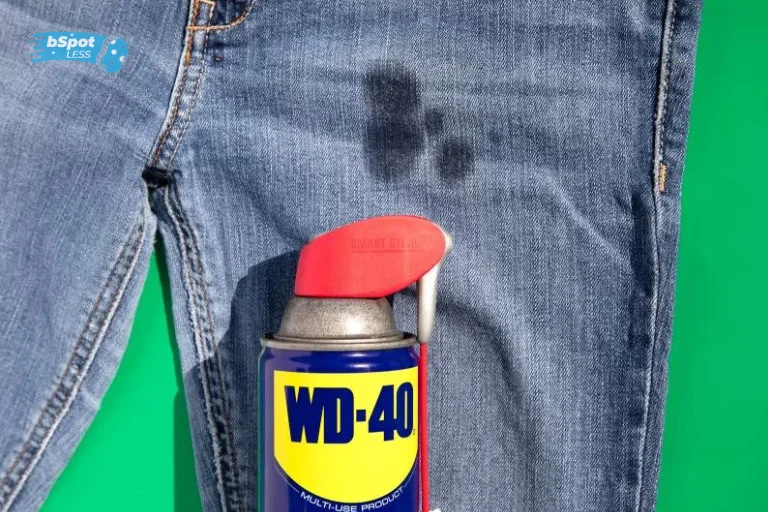Working with hydraulic machinery can be a messy business, and one of the most frustrating parts is getting hydraulic oil on your clothing. Hydraulic oil is a thick and greasy substance that can leave stubborn stains on your clothes, and it can be challenging to remove.
However, don’t worry – in this blog post, we’ll show you how to remove hydraulic oil from clothing with simple yet effective methods. Whether you’re dealing with a small spill or a larger stain, we’ve got you covered.
So, if you’re wondering how to get rid of those unsightly hydraulic oil stains on your clothes, keep reading to discover our tips and tricks for removing hydraulic fluid and restoring your clothes to their former glory. Our target keyword for this post is “how to” remove hydraulic oil stains from clothing.
Safety Precautions
When it comes to removing hydraulic fluid or oil from clothing, safety measures are crucial. It is important to wear the appropriate safety gear, such as rubber gloves, safety glasses, and a face mask. Additionally, working in a well-ventilated area is essential.
To remove hydraulic oil or fluid stains from clothing, it is important not to use any harsh chemicals that may damage the fabric. Instead, use a commercial hydraulic fluid remover or a heavy-duty detergent. Before applying any product, gently remove any excess fluid or oil with a clean rag or paper towel. For oil-based stains, pre-treat the stained area with lemon juice, baking soda, or hydrogen peroxide before washing.
Use warm water and a strong detergent, and add half a cup of white vinegar or oxygen bleach to the washing process. If the stain persists, repeat the process or try rubbing alcohol or acetic acid. After washing, air dry the clothing on a flat surface. By following these steps, you can successfully remove hydraulic fluid or oil stains from clothing without leaving an unpleasant smell or damaging the fabric.
Gather Supplies
When it comes to removing hydraulic oil from clothing, it is crucial to use the right materials and techniques. You will need liquid detergent, pre-treatment spray, dish soap, cat litter, a rag, paper towels, and warm water. For more stubborn stains, you may consider using a commercial hydraulic fluid remover or Pour-N-Restore® Oil Stain Remover.
To begin, gently remove any excess fluid or oil from the stained area. Next, pre-treat the entire stain with a heavy-duty liquid detergent or paste, ensuring that the stained area is completely covered. Let the detergent sit for at least half an hour before washing the clothing with hot water and a strong detergent. If the stain persists, repeat the pre-treatment process and wash the clothing again with oxygen bleach.
For synthetic fabrics, use cold water instead of hot water. After washing, air dry the clothing on a flat surface. If the unpleasant smell of hydraulic fluid remains, soak the clothing in a mixture of white vinegar and warm water before washing it again. Avoid using a bleaching agent or rubbing alcohol as they can damage the fabric.
Remove Excess Oil

Removing excess of oil out of clothes is the first step in cleaning hydraulic oil from clothing. It is important to do this as soon as possible after the stain occurs. To do this, you can use a paper towel or cloth to wipe up the oil, or you can use cat litter to absorb it.
Avoid washing the clothing immediately, as this can cause the oil to spread and set into the fabric. If the stain persists, you can use a specially formulated oil stain remover like Pour-N-Restore® Oil Stain Remover. Begin by oil out of clothes by moistening the area with warm water and then apply the cleaner according to instructions on the product.
Apply Detergent
To remove hydraulic fluid stains from clothing, start by removing any excess fluid using a clean rag or paper towel. Then, apply a commercial hydraulic fluid remover or a homemade solution of isopropyl alcohol, hydrogen peroxide, and baking soda.
Gently rub the stained area with the solution and let it sit for a few minutes before washing the clothing with a heavy duty laundry detergent and enough oxygen bleach to completely remove the stain. If the stain persists, pre-treat with a stain remover or a paste made from hydrogen peroxide and baking soda.
Air dry the clothing on a flat surface and if there is still an unpleasant smell, mix half a cup of white vinegar with cold water and soak the clothing for an hour before washing again. Avoid using hot water as it can set the stain permanently.
Wash the Clothing
To remove hydraulic fluid stains from clothing, the first step is to act quickly and blot the excess fluid out of clothes using a clean rag or paper towel. Then, pre-treat the stained area with a commercial hydraulic fluid remover or a mix of baking soda, dish soap, and hydrogen peroxide. Gently rub the mixture into the stain and let it sit for half an hour.
After that, completely remove the mixture with a clean cloth and check if the stain persists. If it does, repeat the pre-treatment process using a strong detergent or a mixture of lemon juice and isopropyl alcohol. Once the stain is completely covered, it is time to launder the clothing item using enough oxygen bleach and laundry detergent.
Be sure to read the clothing label to determine the best cycle and temperature settings for washing. After finishing the washing process, air dry the clothing item on a flat surface. Check the clothing item for any remaining hydraulic stains again, and if necessary, repeat the pre-treatment and laundering process until the hydraulic fluid stains are removed.
Check for Stains
Once you have treated stubborn stains, it is important to check for any remaining stains on the clothing. If you see any stains, repeat the previous steps for removal. If you have applied a pre-treatment spray, use a damp cloth to gently rub the area and then rinse with warm water.
If the stain still persists, you may need to use a stronger product such as Concrete Oil Stain Remover and Cleaner Terminator-HSD. Begin by moistening the area with warm water and then applying the product according to the manufacturer’s instructions.
Treat Stubborn Stains
If you have a stubborn oil stain, you can use a commercial oil stain remover or a paste of liquid detergent and hot water only. Rub the detergent or paste into the stain, or spray the area with pre-treatment spray. Once the detergent has been applied, let it sit for a few minutes before rinsing it off with cold water.
For particularly tough oil stains however, you may need to repeat this process several times. If the stain persists, you can also try using Pour-N-Restore® Oil Stain Remover. This product is specifically designed to remove oil stains from driveways, garages, patios, and stone surfaces. To use it, begin by moistening the area with warm water and then sprinkle the product onto the stained area. Allow it to sit for an hour or two and then rinse it off with cold water.
Check for Smell
One crucial step after laundering the clothing is to check for any remaining odours. Before drying the clothing, it is recommended to perform a sniff test to detect any lingering smells. In case there is still a musty odour, an odour remover spray can be used.
This is especially helpful for removing oil stains, to eliminate any remaining odours and freshen up the clothing item. Once the odour check is complete, the clothing can be dried.
Dry the Clothing
After washing and checking the clothing for any remaining stains, it is crucial to dry it properly. The best way to do so is by hanging it on a clothesline or rack in a warm, dry place. Alternatively, one can lay it on a flat surface, like a table or the floor, making sure it is not in direct sunlight or near any heat sources.
To remove hydraulic fluid stains, one can use a commercial hydraulic fluid remover or a mixture of baking soda, dish soap, and hydrogen peroxide. It is essential to pre-treat the stained area with the solution and gently rub it with a clean cloth before washing it with heavy-duty liquid detergent or a strong detergent powder.
After washing, the clothing should be air-dried, and if there is still an unpleasant smell, one can add half a cup of white vinegar during the washing process. Once dry, the item should be stored safely.
Store the Clothing Safely
Once the hydraulic fluid stains have been treated using a commercial hydraulic fluid remover or a homemade mixture of dish soap, baking soda, and hydrogen peroxide, it’s important to thoroughly rinse the stained area with cold water.
To completely remove the stain, it may be necessary to pre-treat the area with a heavy-duty liquid detergent or a paste made of baking soda and water before washing the clothing in hot water with a strong detergent.
Oxygen bleach can also be added to the washing process to help break down the oil molecules and remove any remaining stains. If the stain persists, it may be necessary to repeat the process or use a commercial stain remover.
Once the clothing has been washed, dried, and all stains removed, it’s important to store them safely to avoid future staining. This can be done by storing them in a cool and dry place, preferably away from direct sunlight, and away from other fabrics to prevent any potential staining.

